“It’s stressful because I’m going out on a limb,” chief winemaker Tim Dolan tells me.
We’ve met to discuss Kaesler’s benchmark Barossa Shiraz, affectionately called the “Old Bastard” after the gnarly old bush vines planted by the Kaesler family in 1893.
Tim, who joined Kaesler in September 2022 after 10 years as the senior winemaker at Peter Lehmann Wines, is in London promoting Kaesler’s new releases for UK distributor Jeroboams. The outstanding 2020 Old Bastard Shiraz celebrates the 127th anniversary of these 12 rows of ancestral vines near Kaesler’s winery just south of the Barossa Valley township of Nuriootpa.
Kaesler has 37ha of vineyards – about 20 of which are planted to Shiraz. 28ha surround the winery. The estate was purchased in 1999 by agribusiness entrepreneur Ed Peter and winemaker Reid Bosward, together with business partners. They soon realised the old vines were in a terrible state and brought in viticulturist/vineyard manager Nigel van der Zande in 2001.
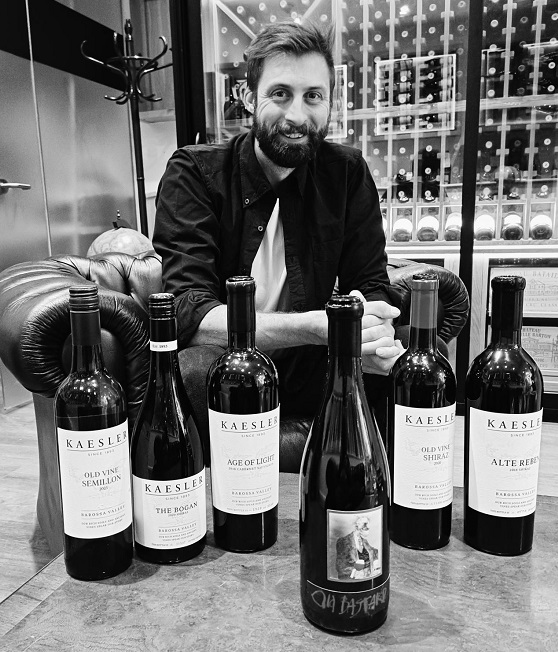
A lot of work was needed to revive the salty soil and own-rooted vines, which were suffering from Eutypa dieback. Nigel began an intense programme of adding organic matter and reshaping the crop and canopy. The changes in the vineyard were matched by changes in the wine style. As Reid puts it: “Our winemaking had to change to suit the vineyard, not the other way around.”
This was the period when big, black, dense, high-alcohol Shiraz wines were in fashion, but the old vines were better suited to producing red fruit flavours.
Regarding the blockbuster wines that the USA market was demanding at the time, Tim says: “I think they’re really attractive early on. But as they age, I just feel they drop away quite quickly. The wine’s so beautiful and opulent and rich as two to three year olds, but kind of falls off after eight to 10 years.”
Since 2013 Kaesler has been harvesting earlier and moving away from the “monolithic 17 percenters” which Reid “can’t stand” towards red wines with a lighter touch and a greater sense of balance overall.
It’s the direction Tim (below) is happy to follow. “I didn’t see the point of really trying to reinvent the wheel – it wasn’t necessary,” he says. “The journey Nigel and the team had been on is exactly what I think should be happening in the Barossa anyways.”
The vineyard
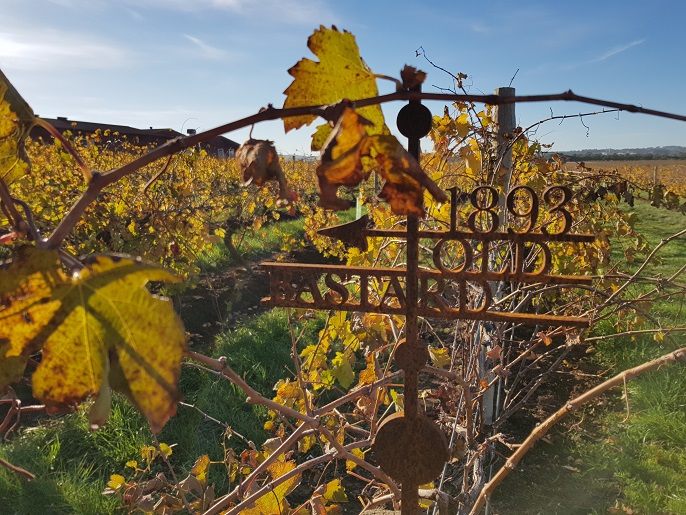
Tim describes the viticulture in the 1ha Old Bastard vineyard as “hands off”, adding: “Hands off whilst being hands on.”
It’s close to regenerative organic.
Nigel, who grew up in the valley chasing lizards and kangaroos and now lives on site, is passionate about the land. “I think that kind of comes across in the agriculture and letting things thrive within the environment,” Tim comments. Shorty after Nigel (below right) joined Kaesler, according to Tim, “he recognised that if he was going to continue on a more conventional path, the old vines would probably die under his watch. And that would be a disaster, not only for him, but for the company”.
After a good deal of research, they chose to go down a more sustainable pathway “using native grasses, no tilling, absolutely no mechanical intervention to the soil whatsoever, no herbicides or pesticides, obviously handpicking and hand pruning” and only using organically certified products.
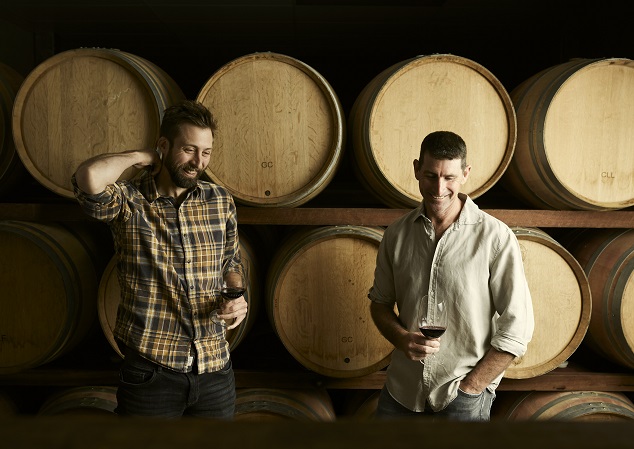
The winemaking
‘It is what it is’They try to pick the grapes at the perfect moment based “on taste and experience”, but Tim admits the actual timing comes down to logistics. He constantly checks several weather apps on his phone and consults Nigel. “Sometimes it’s the least worst decision but you’ve got to make the call and I think we work well as a team,” he points out.
“I think, historically, the Old Bastard has probably been picked a little too late. That has pushed the alcohol and has actually damaged the health of the vines a bit as well. So, we’re very keen to bring that back. Compared to some people that are doing similar styles in the Barossa, we are picking up to a month earlier than what they are doing. For me, this is uncharted waters. It’s stressful because I’m going out on a limb. But if we want to push this style – fresher but with a lot of substance – it’s the only way. Ripeness is coming a lot earlier.
“We’re seeing flavour earlier, too. So, even at 12 Baume, even at 12.5% potential alcohol, the grapes are tasting beautiful. So, we’re picking probably mid to high 13s which is historically going back to the early ’90s. It’s still got structure, density, richness – all those classic hallmarks of Barossa – but it’s a little more restrained.”
The handpicked fruit is tossed into a trailer on a tractor and tipped into a receiving bin at the winery.
'They are given the attention they need'It is crushed and destemmed, then fermented in a combination of open and closed fermenters with a Rhône yeast. The ferments, which last seven to eight days, are tasted and checked two to three times per day “to make sure they are given the attention they need”.
They have tried whole bunches, but Tim says it didn’t work with the Old Bastard. They are experimenting with spontaneous fermentations for their Grenache and a small block of Viognier, but most of the Shiraz is inoculated almost immediately.
They check the acidity levels and adjust if necessary, but Tim says the earlier picking date means “acid adjustment isn’t as necessary”.
Tim adds: “Of course, we’re legally allowed to add water. The amount of water I’ve added since joining Kaesler is almost nothing, which has been fantastic. I think that shows the balance. I think that’s been the biggest change for me – it is what it is.”

Once the fermentation has been under way for 24 hours, the must is a pumped over in the morning and evening. “10 to 15 minutes max with aeration at the same time,” Tim adds. “We are really backing off the amount of pumpovers that we do.”
The temperature is controlled to peak at 25-26°C, then brought down slowly. “I’m not trying to go too hot,” Tim points out.
When the wine is almost dry, the skins go into a 20-year-old bag press. “I’ve found the style of wines coming out of this press is awesome. It just doesn’t over-extract the tannin. It’s not chewy; it’s there but it’s quite restrained. That’s what I’m looking for in a Barossa Shiraz,” Tim says.
The pressed juice nearly always goes back into the tank. “Except for the occasional year where we feel towards the end of the press it’s getting a bit firm.” Then they keep the pressings in a barrel together and make a “pressings Shiraz which is a cellar-only wine”.
After a couple of additional days of settling in a tank, the wine is racked to 40% new and 60% one- and two-year-old Burgundian barriques. The amount of new oak has declined in recent years, from over 50% a few years ago and 80 or 90% in the early 2000s. There is also a recently purchased “American imposter” in the beautiful underground cellar. Tim may well add more American oak in the future for other wines.
He says: “The pendulum swings and, right now, the pendulum has swung to French oak. Eventually it’s going to go back. That’s not to say Kaesler is going to be 100% new American oak the next time we catch up, but I think in a wine like Bogan at 5, 10, 15% it might give it some lift and some sweetness.”
I ask about other vessels, such as concrete eqgs, but Tim replies: “I’m yet to be convinced whether this is just a marketing thing or whether it does have an impact on quality.”
Larger format oak could be on the cards, however.
As well as seeing less new oak, the wine spends less time in barrel now – which Tim identifies as a trend in Barossa. The Old Bastard tends to come out of barrel after 15 to 16 months.
'We try and give it a bit of extra love'“We’re topping every month throughout that 15 months,” Tim says. “It’s a small batch, so we try and give it a bit of extra love. Everything else is on three months’ rotation.”
This is when they check and adjust the sulphur levels.
The wine receives its first dose of SO2 after MLF. “This is my security blanket. To know that it’s going to go down and be happy,” Tim admits. The aim is to bottle the wine around the mid-40s free, with total SO2 of 80-100mg/L.
The MLF regime at Kaesler is new to Tim. Previously – like many winemakers – he would put the wines in barrel for a natural malolactic conversion. At Kaesler, he spotted senior winemaker Stephen Dew, who has been there since 2002, inoculating towards the end of the fermentation. But the results were “fantastic”. Tim adds: “Now, I’m a convert. I’ve found that if you don’t, if you inoculate with malo post-fermentation, you open yourself up to trouble with getting malolactic fermentation to go through (in higher alcohol and cooler winter temperatures). So, I think that this eliminates that risk.
“In terms of style and structure, and how the wine looks, I don’t think I could tell the difference. Have I proved that theory? No. But having seen what happens at Lehmanns and then coming to Kaesler, I don’t see a reason to change it. This year, for instance, we were pretty much done with harvest by the end of March and then, by the end of May, everything was through malolactic fermentation, racked to barrel, returned with the sulphur – everything was put to bed so I could go on holiday and then come over here (to the UK) having absolute confidence in the wine. I would be on edge if I left and there was still unfinished business… especially in a year like ’24 when every last drop counts.”
He reckons yield is 30% down this year and 20% lower in the Old Bastard vineyard after a dry winter, frost event and hot summer.
Pre-bottling, the wines go through a crossflow filter. “That’s about it,” Tim says when asked about the fining and filtering regime.
That’s about it regarding the winemaking, too. It’s time for an Old Bastard to enjoy an Old Bastard.
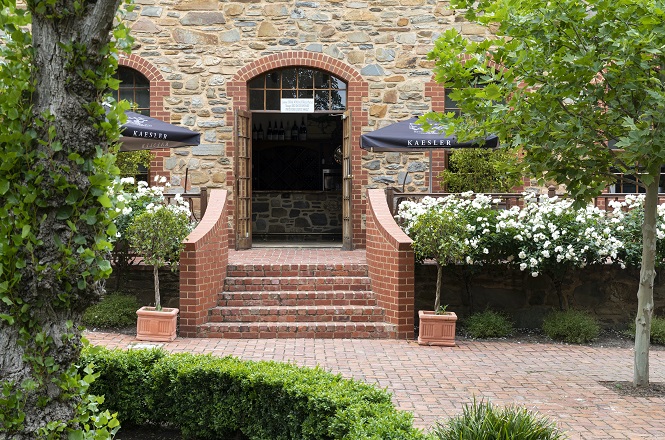
Kaesler 2020 Old Bastard Barossa Shiraz
Variety: Shiraz 100%
Region: Barossa Valley
Vine age: 126 years
Soil type: Loam over clay
Harvest: Hand
Origin of oak: French
Oak size: Barrique
Maturation: 15-16 months in oak
Yeast: Sachromyces cerevisiae
Alc: 15%
RS: 0.4 g/l
pH: 3.6
TA: 5.7
Ageing potential: 25+ years

 English
English French
French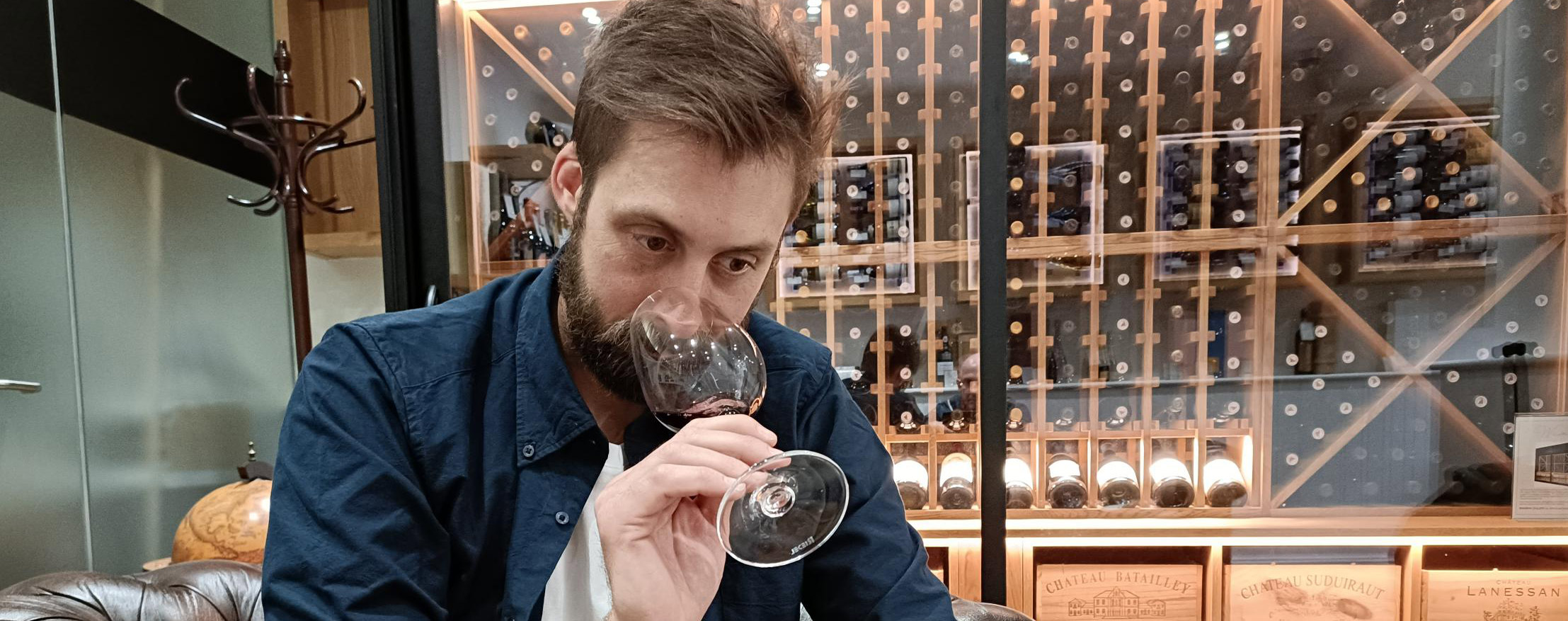



.png)
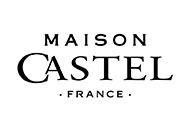

.png)





